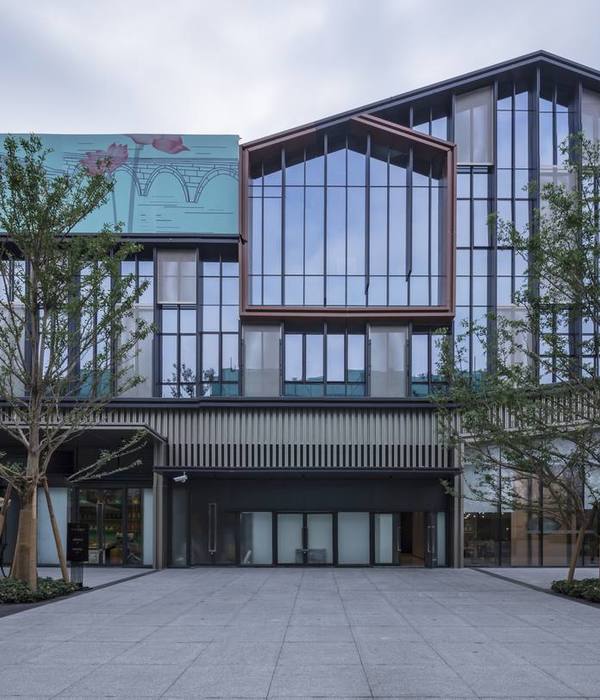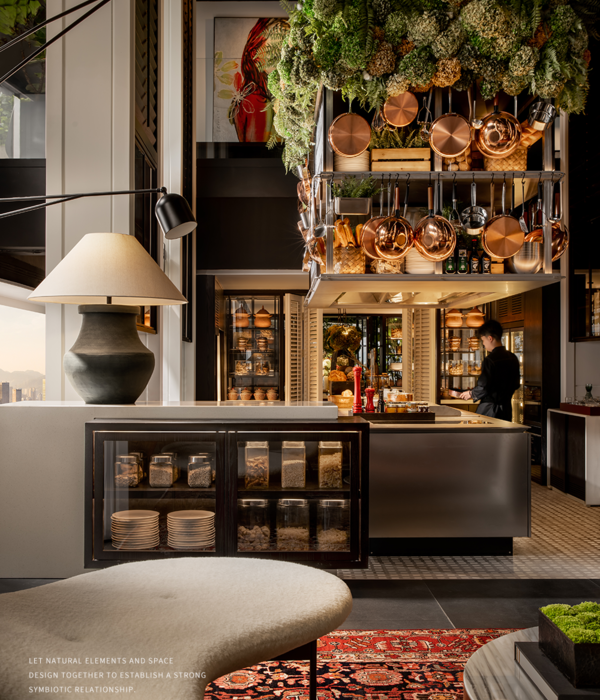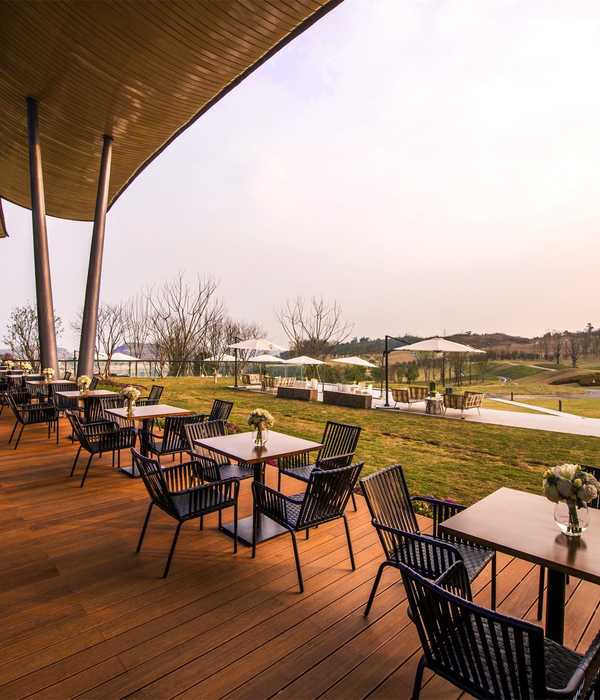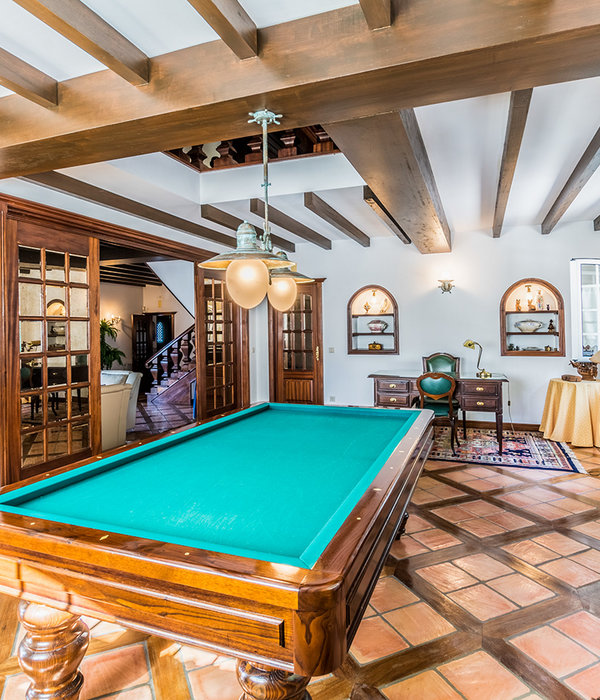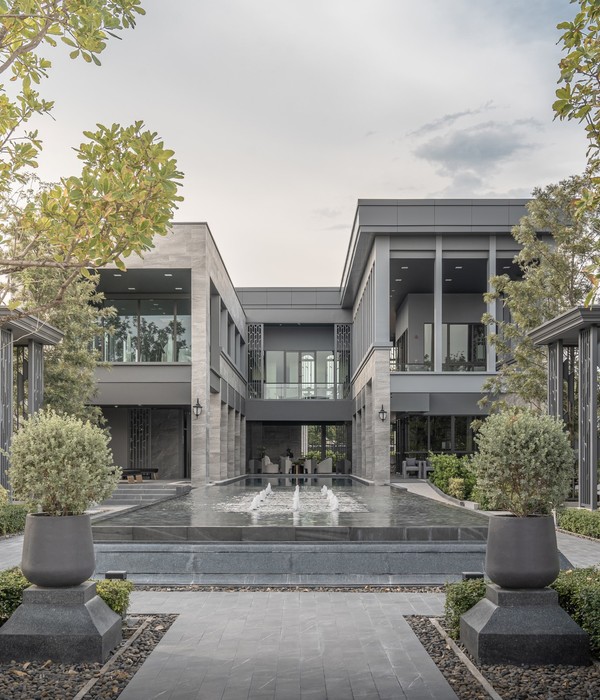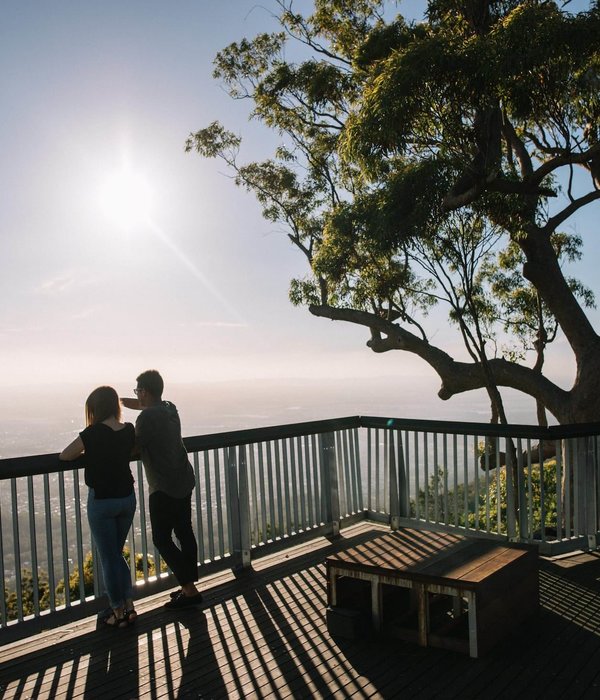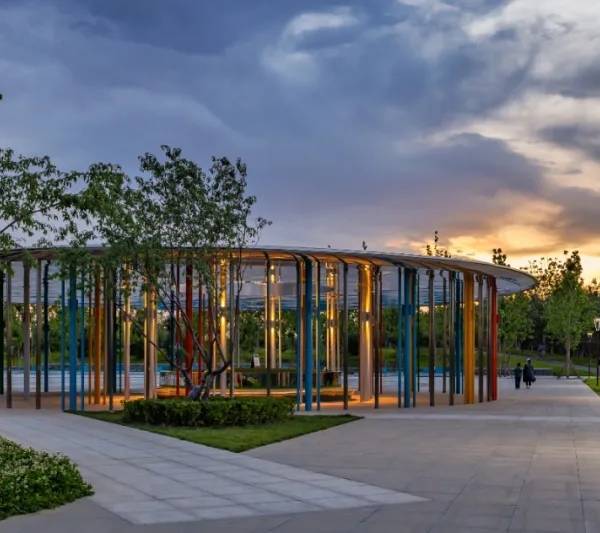来自
ASLA
Overlook Farm by
Nelson Byrd Woltz Landscape Architects
,更多请至:
Appreciation towards
ASLA
for providing the following description:
项目陈述 PROJECT STATEMENT
Overlook农场的总体规划是以生态保护、文化保护、可持续农业作业为基础,打造一座具有典范意义的耕作式景观。景观设计师与业主通力合作,共同再现了这座位于宾夕法尼亚州道尔顿市的文化遗址景观——Overlook农场。此处地产由业主的先人于1902年购置,将其作为夏季度假场所委托Olmsted公司设计并实施各项规划。百年过后,业主希望通过重塑该地块的面貌来纪念家族的传奇。设计团队提供的总体规划着力于重新调整地块的生态系统,彰显文化遗产,并打造农业生产模型,用以完善该地块生态化的服务模式。方案提供了详尽的实施策略,赖于细致周到以肥沃、多产且能创造营收为目标的设计创新,打造可持续性的、立足未来的Overlook景观。
The master plan establishes Overlook Farm as an exemplary working landscape, founded on principles of ecological conservation, sustainable agricultural production, and cultural preservation. The Landscape Architect collaborated with the client to re-envision Overlook – a cultural heritage landscape, in Dalton, Pennsylvania. Purchased in 1902, the family’s ancestors commissioned the Olmsted firm to design and implement plans for what was to be a summer retreat. After 100 years of connection to the land, the client desired to honor this family legacy through a re-envisioning of the property. The design team has created a master plan which resets the site’s ecosystems, celebrates its cultural heritage and establishes a model of agricultural production that complements the ecological services of the site. The plan offers implementation strategies that rely on thoughtful design initiatives for the health, productivity and profitability of the Overlook landscape sustainably into the future.
△ Overlook农场景观总体规划。Overlook Farm Master Plan
Photo Credit: Nelson Byrd Woltz Landscape Architects
项目说明 PROJECT NARRATIVE
作为文化遗址景观的Overlook,是一处位于宾夕法尼亚州道尔顿市面积为320英亩的庄园。经过百余年几代家族成员的传承,业主意图寻求一种方式来纪念家族在这片土地生活过的悠久历史,通过景观设计师创作的总体规划为子孙后代留下一处肥沃、多产且能创造营收的土地。Overlook农场总体规划的目标是打造一处具有典范意义的耕作式景观, 通过设计创新打造出它的基础——生态保护和管理,可持续的农业产出以及文化保护。
Overlook管理规划的基础是保护并凸显文化景观。这使得景观设计师有机会对原先Olmsted设计的以颇为正式的古典花园为中心的景观进行保护并在几个方面加以优化。在Olmsted档案馆,设计团队得以查阅大部分原先的方案图纸。对这些图纸的审阅形成了历史核心区域的基本构思,在这一区域内,家族历史与文化景观交织在一起,在广阔的生产作业和试验田地中间散布着交错的羊肠小道。
设计过程受到农业保护工作室(ConAg)的指导,后者是一支由设计师、科学家、农学家组成的联合策划团队,成员之间共同协作打造兼具成效和象征意义的、具有巨大潜力的耕作式景观。在Overlook项目中,ConAg的策划成果展示和表现出基地独一无二的特征和生态性,并增加了其已有的及未来的农业发展机会。与此同时,资源(生态、文化和美学)的保护是同丰富的产值及教育的效益并行考虑的。
建立生态保护与修复方案的导则是在对Overlook进行基础调研及对生态现状进行记录整理的基础上得来的。设计师同来自纽约州雪城Roosevelt野生生物所的杰出生态学家们合作搜集和观测Overlook野生生物的现状。其结果和处理办法按照鱼类、昆虫、两栖动物、鸟类、植物和哺乳动物进行分类。Overlook多层次的历史和生态环境(Olmsted的规划方案、实现的情况和现下剩余的形制)在设计调研和场地分析中逐渐变得清晰,并最终启发了新总体规划的设计方向。其结果综合考虑从可能的栖息地情况到连带产生的居住者等诸多问题,从而形成一个对这片土地的长远规划。依据这些数据,设计团队针对精准的场所需求为其量身打造总体规划的实施方案。
总体规划为场所保护及增加包括泉水池、湖泊、水边木板人行道、交织河道湿地等元素的水文系统提供指导。为了提升基地内水系的重要性,设计师通过多种方式来增强它们的可达性,在地区范围内同更大规模的交通网络联系起来。
历史地块的使用和现代的基础设施与资源、周边市场及土地的生态特征都整合在总体规划的农场项目中,BioBlitz为实践提供基本框架,同时也启发了更大范围内相关连的生态系统的管理。设计利用多种生物的共生来促使农场生产出营养且美味的食物。恰如各元素都无法单独存在一样,农场同样与其他部分密不可分。以这样一种方式,各个部分共同形成规模更大、更具活力的整体,农场景观成为一个有效的、可循环的、欣欣向荣的有机体。总体规划保留了Overlook文化的连贯性,同时加强了它固有的美感和丰富性,通过实践创造一个经济可行的、具有教育意义的、创新型农场。总体规划通过可被讨论并修改的图标和地图来展示营养物质循环、动物迁移、物质能效等方面的合理动线,如同一个可见的活生生的文本。
以保护和加强特定具有留存意义的区域为目标,基于全面的管理经营策略,景观设计师创造了一套指导原则。策略的实施同时放大生态系统的服务性能和农业产出,看上去是二者协同增益的良机。以此为基础,Overlook作为一个具有生态功能的耕作式农场景观项目,其愿景已初露端倪。Overlook人工耕种项目的基本特征在设计时被整合进来,强化了遗产保护的客观性。
考虑到业已存在的业主同俄勒冈大学Overlook Field学院的关系,总体规划就地成立生产型景观中心,以此建立访问学生和教员同社区之间的联系,及景观农业范畴内土地管理事宜同生产力的联系。在总体规划制定期间,设计团队得以同学生和教员交换想法和实施办法。因在文化景观领域可持续的学术研究,最终成型的文件改进了校园的园区结构。
最终的总体规划指导业主和管理者保护地产内多样的生态系统,彰显它的文化遗产,打造可持续的农业产出。
△ Overlook是一处面积达320英亩的文化遗产景观。Overlook is a 320-acre cultural heritage landscape
Photo Credit: Nelson Byrd Woltz Landscape Architects
△ 景观设计师有机会对原先Olmsted设计的以颇为正式的古典花园为中心的景观进行保护并在几个方面加以优化。The Landscape Architect had the opportunity to restore and embellish several elements of the original Olmsted landscape centered on the historic formal gardens.
Photo Credit: Nelson Byrd Woltz Landscape Architects
△ 生态保护与修复方案的基础是对Overlook的基础调研及对生态现状的记录整理。Ecological preservation and the restoration protocol was based on site surveys and existing ecological conditions.
Photo Credit: Nelson Byrd Woltz Landscape Architects
△ 设计师同来自纽约州雪城Roosevelt野生生物所的杰出生态学家们合作搜集和观测Overlook野生生物的现状。The designers along with a distinguished group of ecologists from the Roosevelt Wildlife Station in Syracuse, New York collaborated in the collection and observation of wildlife of Overlook.
Photo Credit: Nelson Byrd Woltz Landscape Architects
△ Overlook多层次的历史和生态环境在设计调研和场地分析中逐渐变得清晰,并最终启发了新总体规划的设计方向。Overlook’s layered history and ecology were uncovered during design research and site analysis, ultimately inspiring the direction of the master plan.
Photo Credit: Nelson Byrd Woltz Landscape Architects
△ BioBlitz为实践提供基本框架,同时也启发了更大范围内相关连生态系统的管理。The BioBlitz provided the guiding framework for the master plan while inspiring a larger responsive network of monitored and managed ecosystems.
Photo Credit: Nelson Byrd Woltz Landscape Architects
△ Overlook农场总体规划的目标是打造一处具有典范意义的建立在生态保护和管理原则上的耕作式景观。The Overlook Farm master plan’s objective was to create an exemplary working landscape, founded on principles of ecological preservation and stewardship.
Photo Credit: Nelson Byrd Woltz Landscape Architects
△ 保护和增加包括泉水池、湖泊、水边木板人行道、交织河道湿地等元素的水文系统,在设计过程中是设计师首要考虑的问题。The preservation and augmentation of hydrologic systems – including vernal pools, lakes, boardwalks, and braided wetlands – was at the forefront of the design process.
Photo Credit: Nelson Byrd Woltz Landscape Architects
△ 总体规划提议在修复后的本土生态系统中置入可持续农业和文化保护项目。The master plan proposes the siting of sustainable agricultural and cultural preservation programs in restored native ecosystems.
Photo Credit: Nelson Byrd Woltz Landscape Architects
△ 总体规划建议对野生生物和自然系统进行持续的监管。The master plan recommends continued monitoring of wild life and natural systems.
Photo Credit: Nelson Byrd Woltz Landscape Architects
△ 设计团队针对基地容量和需求量身打造总体规划包括农业在内的的实施方案。The team was able to tailor master plan design implementations, including agriculture, to the precise capacity and requirements of the site.
Photo Credit: Nelson Byrd Woltz Landscape Architects
△ 提案中的农业中心。The proposed Agricultural Center
Photo Credit: Nelson Byrd Woltz Landscape Architects
△ 考虑到业已存在的业主同俄勒冈大学Overlook Field学院的关系,总体规划就地成立生产型景观中心。The master plan considered the client’s existing relationship with the University of Oregon Overlook Field School hosted on the site as the Center for Productive Landscapes.
Photo Credit: Nelson Byrd Woltz Landscape Architects
△ 实施后的农业项目能够有效运作,同周围脆弱而独特的生态环境和谐共处。The implemented agricultural program functions in harmony with fragile and unique ecologies
Photo Credit: Nelson Byrd Woltz Landscape Architects
A cultural heritage landscape, Overlook is a 320-acre estate located in Dalton, Pennsylvania. After over 100 years of multi-generational family ownership, the clients sought to honor their family’s long history with the land by engaging the Landscape Architect to create a master plan to assure the health, productivity and profitability of the Overlook landscape for future generations. The Overlook Farm master plan’s objective was to create an exemplary working landscape, founded on principles of ecological preservation and stewardship, sustainable agricultural production and cultural preservation implemented through thoughtful design initiatives.
The preservation and interpretation of cultural landscapes is fundamental to the Stewardship Plan for Overlook. The Landscape Architect had the opportunity to restore and embellish several elements of the original Olmsted landscape centered on the historic formal gardens. Through research at the Olmsted Archives the design team gained access to most of the preserved drawings from the original Master Plan. Review of these documents formed the basis for the design of the historic core, which interweaves the familial and cultural landscape while placing the precinct within a larger working environment of production and experimentation.
The design process was informed by the firm’s Conservation Agriculture Studio (ConAg), a strategic association of designers, scientists, and master farmers working collaboratively to re-envision the productive and symbolic potential of cultivated landscapes. The ConAg studio at Overlook uncovered and expressed its unique character and ecology, while augmenting existing and future agrarian opportunities. Protection and preservation of resources (ecological, cultural, and aesthetic) were considered in parallel with the benefit of productive conservation and education.
The guide to establishing the ecological preservation and restoration protocol occurred through the collection of a baseline survey of Overlook and documenting existing ecological conditions. The designers along with a distinguished group of ecologists from the Roosevelt Wildlife Station in Syracuse, New York collaborated for the collection and observation of wildlife of Overlook. Results and recommendations were organized into the categories of Fishes, Insects, Amphibians, Birds, Plants and Mammals. Overlook’s layered history and ecology (Olmsted plans, renditions and remnant form) were uncovered during design research and site analysis, ultimately inspiring the direction of the master plan. The resulting information was synthesized with possible habitat range to generate population estimates to be designed into the long term plan of the property. With this data in hand, the design team was able to tailor master plan design implementations to the precise needs and requirements of the site.
The master plan provides guidance for the preservations and augmentation of hydrologic systems and elements on site including vernal pools, lakes, boardwalks, and braided wetlands. In order to amplify the importance of water on site, several design moves will improve access to these varied expressions of water, as they connect to the greater network of trails and the region.
The historical land use, current infrastructure and resources, surrounding markets and ecology of the land have informed the farm program of the master plan – the BioBlitz providing the guiding framework for the practices while inspiring a larger responsive network of managed ecosystems. The design utilizes the symbiosis of a diversity of species to generate farm products that are nutritive and delicious. Just as none of these components exist alone in isolation, each farming enterprise was likewise defined in relationship to other elements. In this way each part creates a greater, more dynamic whole and the farm landscape becomes a working, cycling, thriving whole organism. The master plan preserves the cultural integrity of Overlook while enhancing its inherent aesthetic beauty and fertility creating a farm that is economically viable, educational, and innovative in the process. The master plan articulates this vision with diagrams and maps to be discussed and revised to unlock the appropriate flow of nutrient cycling, animal rotations, and the efficiency of material, acting as the ‘living document’ that it was envisioned.
The Landscape Architect created a set of guidelines based on this comprehensive management strategy with the goal of protecting and enhancing the specific areas of conservation significance. The implementation of this strategy will amplify both the ecosystem services and agricultural production as it looks for opportunities for synergy between the two. From this foundation, the vision of Overlook Farm as an ecologically functional and agriculturally productive landscape has emerged – the fundamental characteristics of the farming program crafted at Overlook is designed to align with and enhance conservation objectives.
The master plan considered the client’s existing relationship with the University of Oregon Overlook Field School hosted on the site as the Center for Productive Landscapes. The center seeks to connect visiting students and faculty with the community and issues of land steward-ship and productivity (agriculture, timber and energy production) within the discourse of land-scape architecture. During the master planning process the design team had the opportunity to engage with students and faculty which produced exchanges of ideas and methods. The result-ant document promotes this campus structure for continued scholarship within this cultural landscape.
The final master plan guides the Client and managers to preserve the property’s rich eco-systems, to celebrate its cultural heritage and to establish sustainable agricultural production.
Drawings: Nelson Byrd Woltz Landscape Architects
English Text: Nelson Byrd Woltz Landscape Architects
MORE:
Nelson Byrd Woltz Landscape Architects
,更多请至:
{{item.text_origin}}

